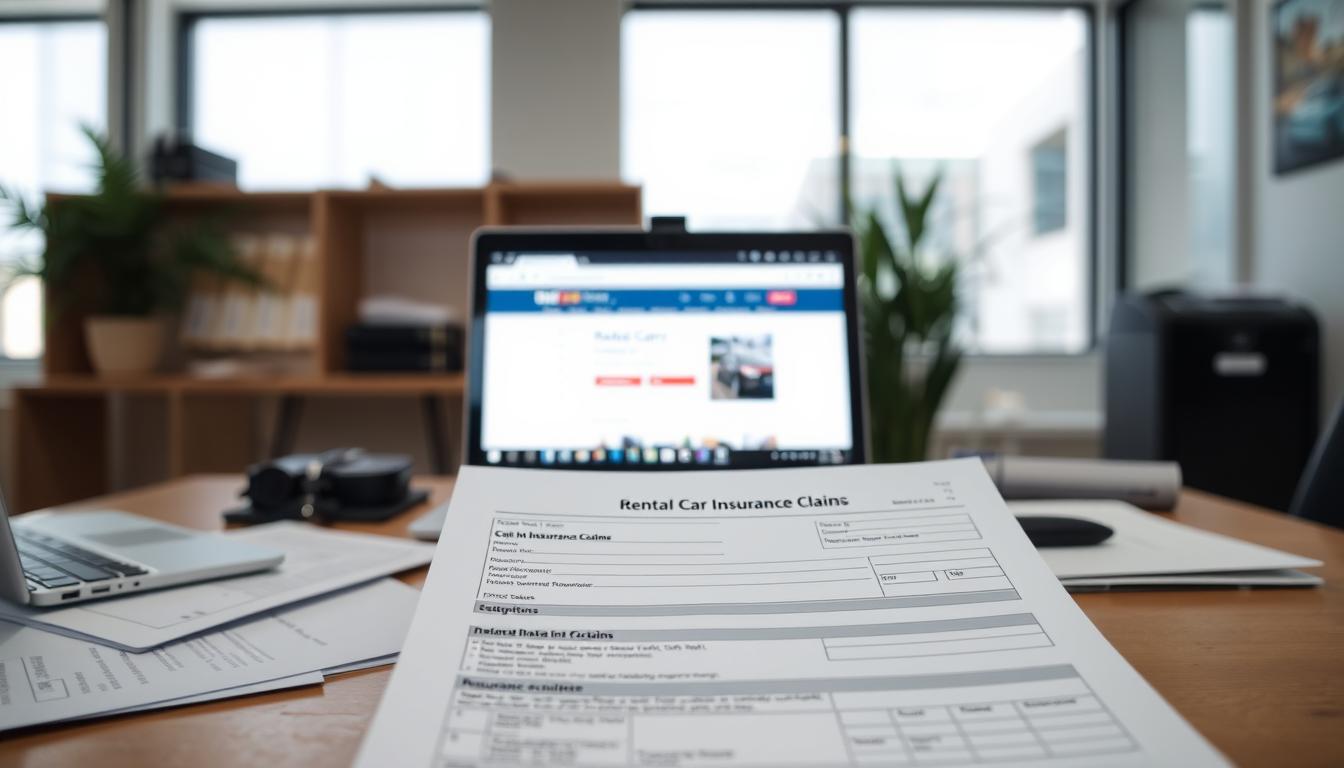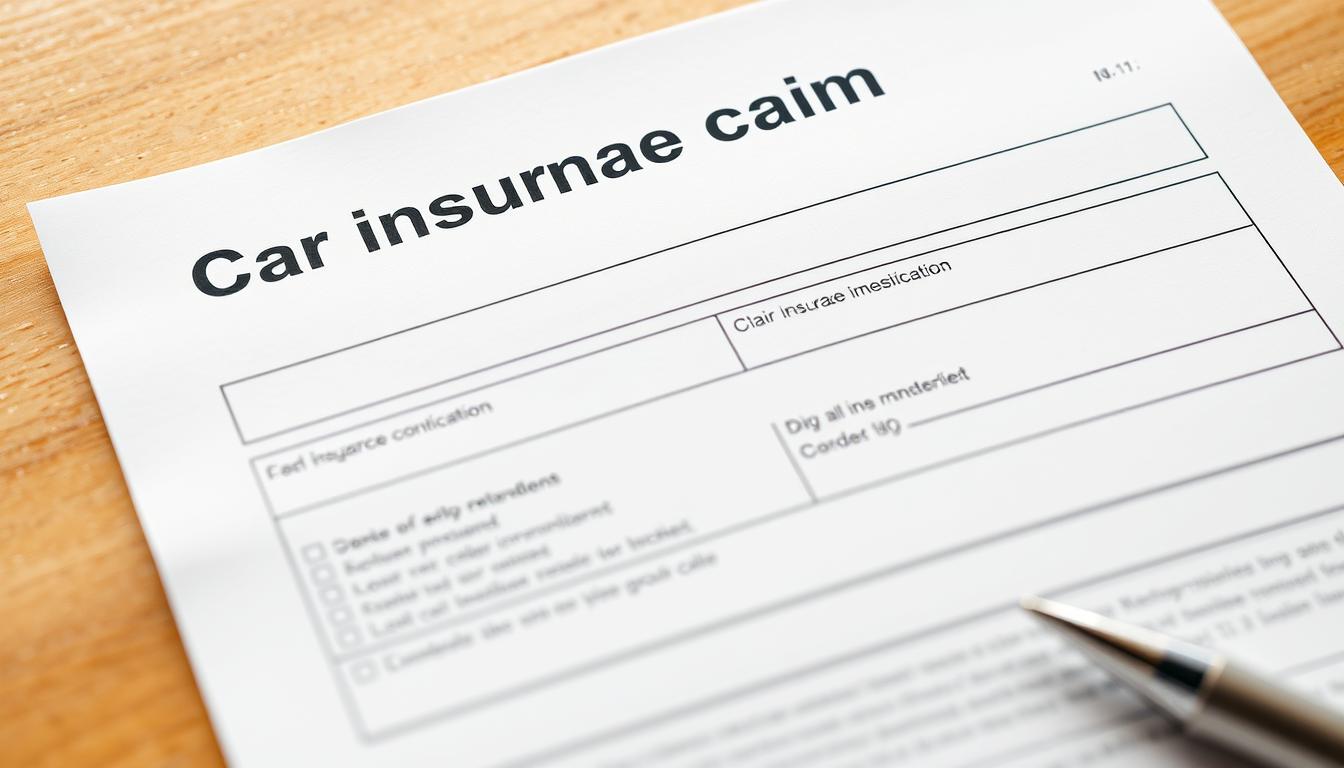Did you know that thousands of people file insurance claims every year after being involved in a rental vehicle accident? Navigating the process can be daunting, but understanding the rental car insurance claim steps can make a significant difference.
Knowing how to effectively file a claim can help you get back on the road quickly. This guide will walk you through the process, from understanding your coverage to the final claim settlement.
By following this step-by-step guide, you’ll be better equipped to handle the insurance claims process, ensuring you receive the compensation you’re entitled to.
Understanding Rental Car Insurance Coverage
The world of rental car insurance can be complex, but knowing your options is key to making informed decisions. Rental car insurance is not a one-size-fits-all solution; it comes in various forms, each with its own benefits and limitations.
Types of Rental Car Insurance
Rental car insurance typically includes Collision Damage Waiver (CDW), Liability Insurance, and Personal Accident Insurance (PAI). CDW covers damage to the rental vehicle, while Liability Insurance protects against claims for bodily injury or property damage to others. PAI provides coverage for medical expenses in case of an accident.
What Your Personal Auto Insurance May Cover
Your personal auto insurance may extend to rental cars, but the extent of this coverage varies by policy. Some policies cover rental cars for liability and collision damage, while others may not. It’s crucial to review your policy or consult with your insurer to understand what is covered.
Credit Card Rental Coverage Benefits
Many credit cards offer rental car insurance as a benefit, typically providing secondary coverage that kicks in after your personal insurance. The specifics of this coverage, including what’s covered and for how long, vary by credit card issuer. Always check your credit card’s terms and conditions to understand the coverage provided.
Rental Car Coverage Claim Steps: The Process
The process of claiming rental car insurance involves several key steps that can help ensure a successful outcome. Understanding these steps is crucial for navigating the often complex world of insurance claims.
Immediate Actions After an Incident
After an incident involving a rental car, it’s essential to take immediate action. This includes documenting the damage and, if necessary, filing a police report.
Documenting the Damage
Take clear, detailed photos of the damage from multiple angles. This visual evidence is crucial for supporting your claim.
Filing a Police Report
If the incident involves significant damage or injury, filing a police report is often required by rental companies and insurance providers.
Contacting the Rental Company
Notify the rental company about the incident as soon as possible. They will guide you through their specific claims process, which may include filling out a damage report form.

Filing a Claim with Your Insurance Provider
If you used your personal auto insurance for the rental, you’ll need to file a claim with your insurance provider. Have your policy number and details of the incident ready.
Submitting Claims to Credit Card Companies
If you used a credit card that offers rental car insurance, you’ll need to contact the credit card company to initiate the claims process. Keep records of your communication and any reference numbers provided.
By following these steps and maintaining detailed records, you can streamline the process of claiming rental car insurance, making it less stressful and more manageable.
Documentation and Follow-Up Requirements
A successful rental car insurance claim hinges on thorough documentation and follow-up. To ensure a smooth process, it’s essential to understand what documents are required and how to manage the claim effectively.
Essential Documents for Your Claim
To file a rental car insurance claim, you will need to gather several key documents. These include your rental agreement, insurance policy details, photos of the incident, and any incident reports filed.
Rental Agreement and Insurance Policy
Your rental agreement and insurance policy documents are foundational to your claim. They provide details about the coverage you have and the terms of your rental.
Photos and Incident Reports
Photos of the incident scene and any damage, along with incident reports, serve as crucial evidence to support your claim.
Timeline Expectations
Understanding the timeline for processing your claim is vital. Typically, insurance companies and credit card providers have a specific period to review and settle claims.
Handling Claim Disputes
In cases where a claim is disputed, it’s essential to know how to navigate the situation. This may involve providing additional documentation or escalating the issue to a higher authority within the insurance company or credit card provider.
Conclusion
Filing a rental car insurance claim can be a complex process, but being prepared and knowledgeable can make a significant difference. By understanding your rental car insurance coverage and following the steps outlined in this guide, you can ensure a smooth claims process.
Proper rental car insurance claim documentation is crucial in supporting your claim and achieving a successful outcome. This includes maintaining detailed records of the incident, the rental agreement, and any communication with the rental company and your insurance provider.
When filing a claim, it’s essential to be aware of the potential outcomes, including the rental car insurance claim compensation you might expect. By being informed and prepared, you can navigate the claims process with confidence and achieve a fair settlement.
FAQ
What is the first step in filing a rental car insurance claim?
The first step is to document the damage or incident thoroughly, including taking photos and gathering witness statements if applicable.
How do I know if my personal auto insurance covers rental cars?
Review your personal auto insurance policy to see if it includes coverage for rental cars. Many policies automatically extend coverage to rental vehicles.
Can I use my credit card’s rental car insurance coverage?
Yes, many credit cards offer rental car insurance coverage as a benefit. Check your credit card’s terms and conditions to understand the specifics of the coverage.
What documentation is required to file a rental car insurance claim?
Essential documents include the rental agreement, insurance policy details, photos of the damage, and any incident reports filed with the authorities or the rental company.
How long does it typically take to process a rental car insurance claim?
The processing time can vary depending on the insurance provider and the complexity of the claim. Generally, it can take anywhere from a few days to several weeks.
What if my rental car insurance claim is denied?
If your claim is denied, review the denial letter to understand the reason. You can then appeal the decision or contact your insurance provider for further clarification and assistance.
Can I file a claim with both my insurance provider and my credit card company?
Yes, you can file a claim with both, but be aware that you cannot receive duplicate compensation. The process is designed to reimburse your actual losses.
How can I ensure I receive fair compensation for my rental car insurance claim?
To ensure fair compensation, thoroughly document the damage, keep detailed records of the incident, and follow up with your insurance provider or credit card company as necessary.




